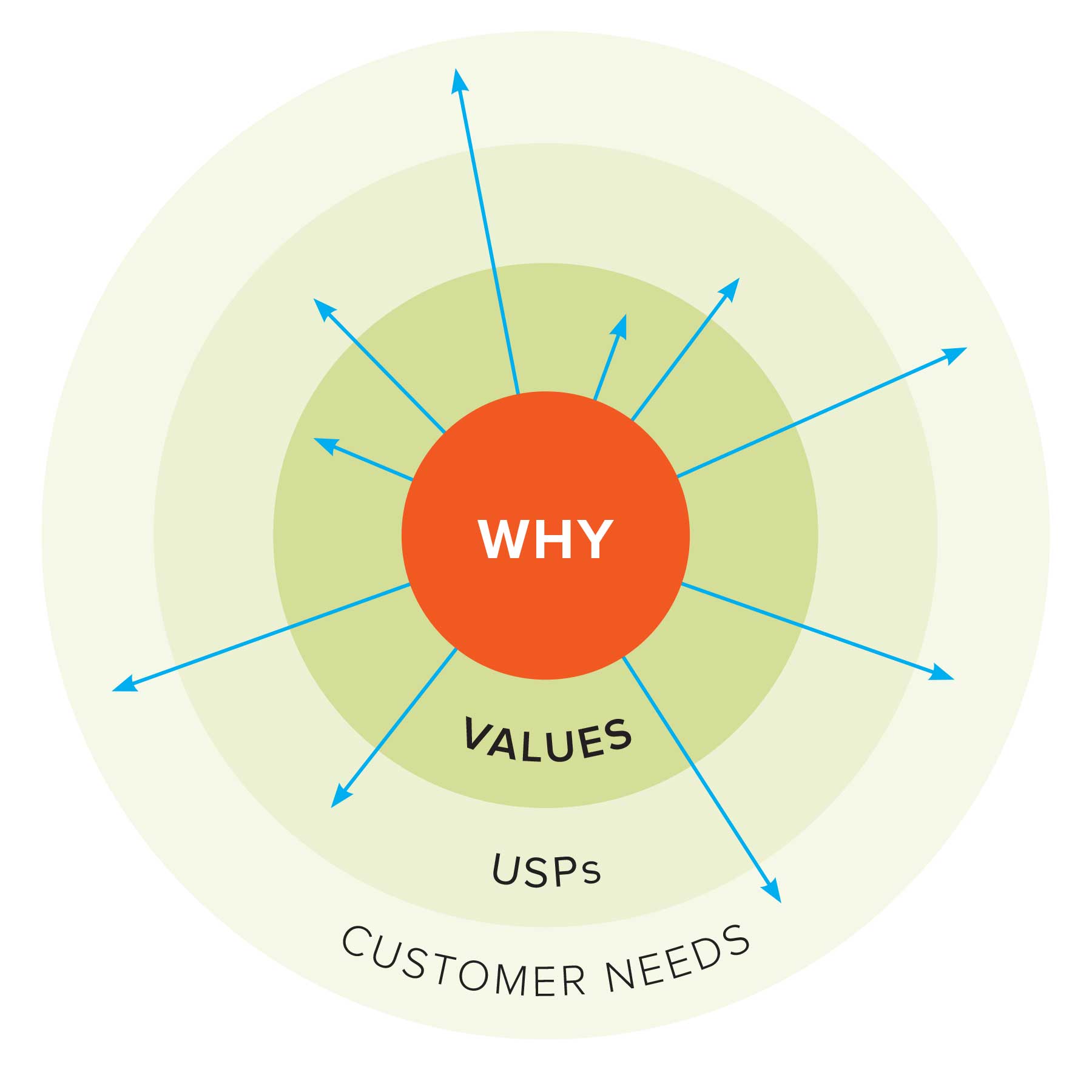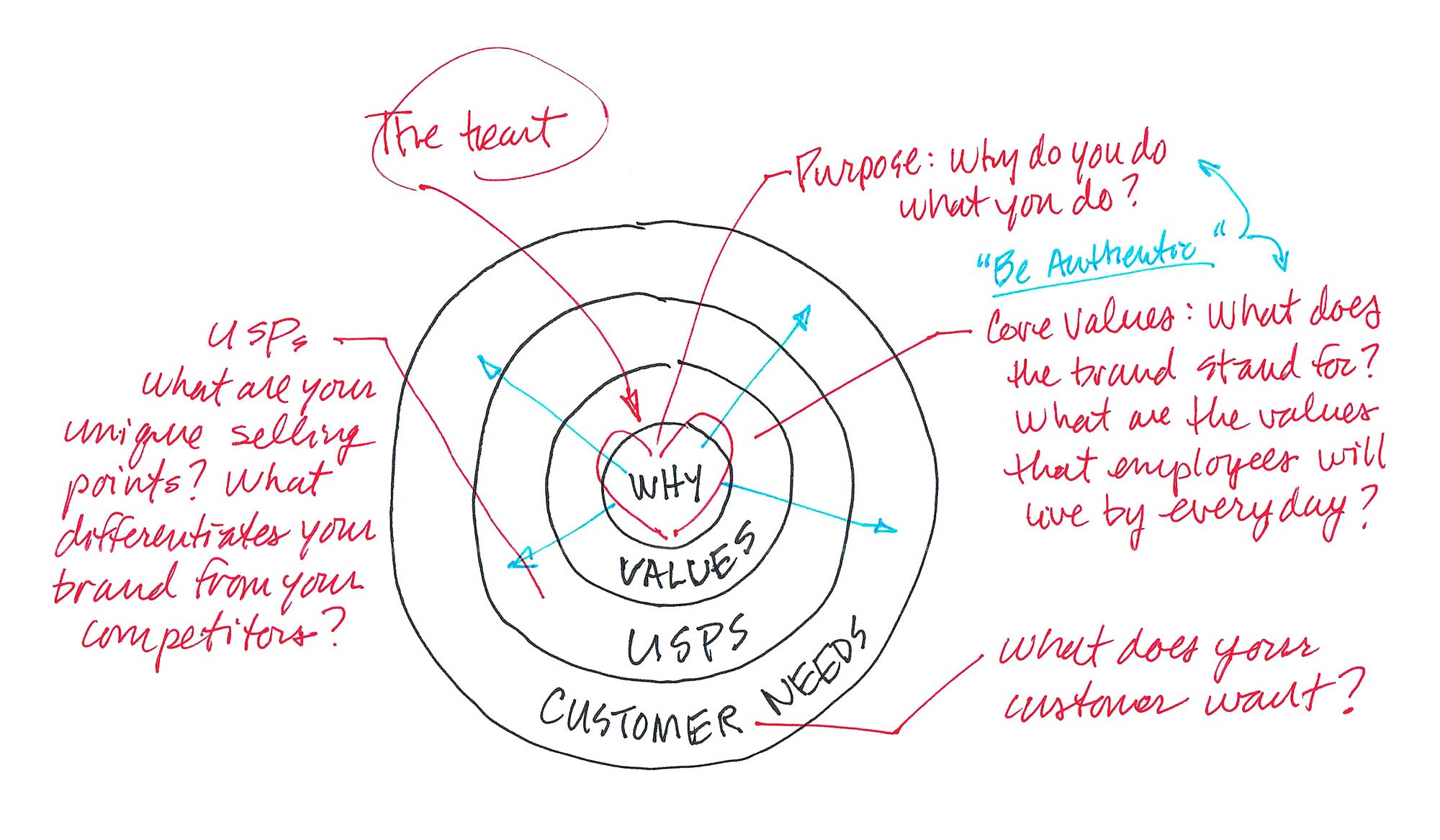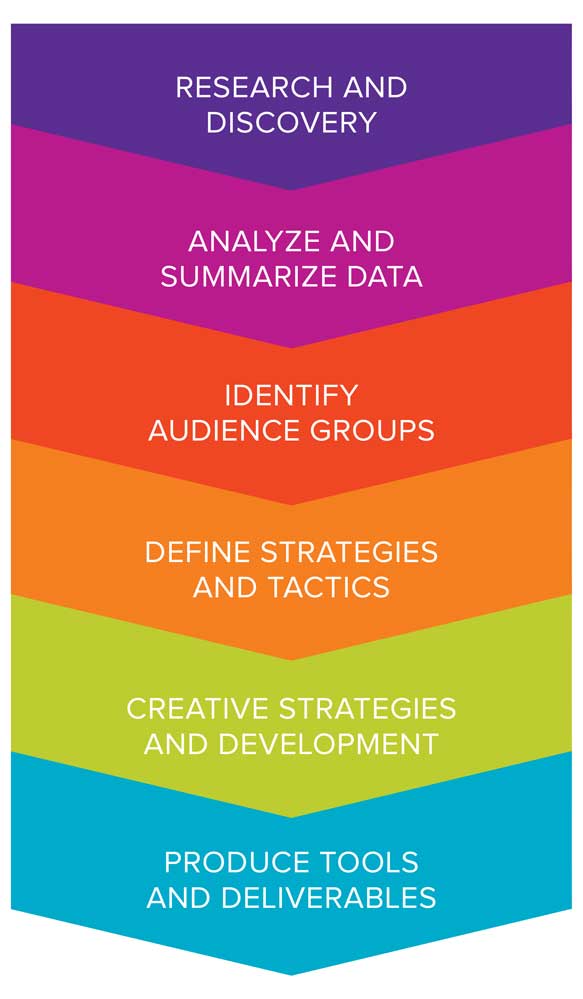Brand Positioning Begins with Authenticity
PURPOSE:
This requires honesty and the ability to step back and look introspectively at the company and why it exists. Why do they do what they do? What is the true purpose of the company? What motivates the brand to succeed, aside from profits? There should be a higher more altruistic purpose. Of all things this becomes the most important thing you provide your customers. Whether it’s assurance, or confidence, or empowerment, or something else, this is the reason they believe in the brand and will advocate for the brand.
“We want to change the way people communicate.”
This is the heart of the brand. This becomes the “WHY”.
CORE VALUES:
What does the brand stand for? These are the values that all employees will work and live by everyday. These are the corner posts for the brand’s foundation and should become an instinctive part of the company culture, not only in the way they treat customers, but in how the employees treat each other. Choosing the brand’s core values shouldn’t be taken lightly and should be a collaborative task done by upper management. A list of values for a company might be:
- Adaptability
- Clarity
- Consistency
- Trustworthy
- Family
- Dependable
The values put forth by a company starts to form the personality of the brand and can be used to establish tone and manner, and look and feel for marketing tools.
USPs:
Define the brand’s “Unique Selling Points”. What differentiates the brand’s products or services from those of the competitors? These need to be user/customer focused attributes or benefits that are directly relevant to the customers and what they need. Why should the customer care about the product? Why will the customer choose your product over the competition? These become key components of message strategy and development. Be clear and concise — think about the audience.
CUSTOMER NEEDS:
Define what the customer wants. Determine what they absolutely have to have or need. Understanding the difference between what they want versus what they need is important. What they “need” is intrinsic or essential. You have to provide this to be in the game. What the customer wants taps into their emotional desires and most of the time trumps logic and practicality during the decision making process. Become their emotional savior and they become a committed advocate for the brand, willing to share their attraction to the brand with friends, family and network.
WHAT’S NEXT:
Once you establish the brand’s foundation you have the ideological platform to develop positioning, strategies, tactics and tools. Next steps:
- Positioning
- Research & Discovery
- Analyze & Summarize Data
- Audience Profiles
- Strategies & Tactics
- Creative Development
- Production & Deployment



